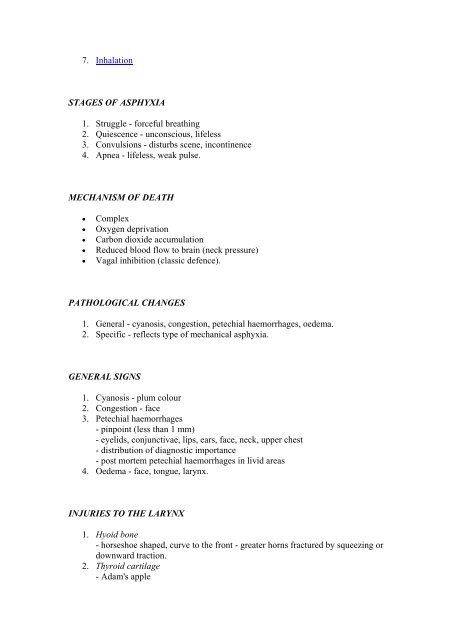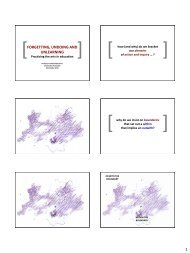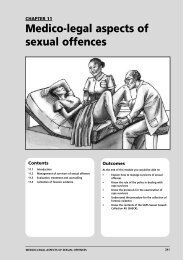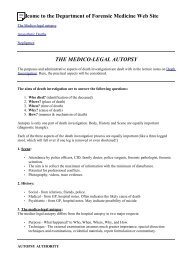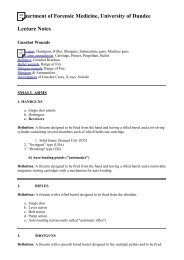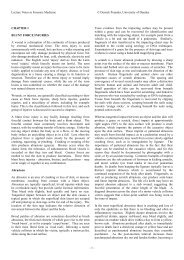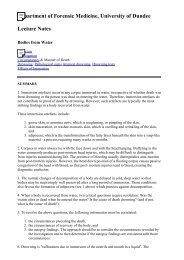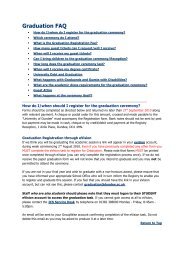Asphyxial Deaths - University of Dundee
Asphyxial Deaths - University of Dundee
Asphyxial Deaths - University of Dundee
Create successful ePaper yourself
Turn your PDF publications into a flip-book with our unique Google optimized e-Paper software.
7. Inhalation<br />
STAGES OF ASPHYXIA<br />
1. Struggle - forceful breathing<br />
2. Quiescence - unconscious, lifeless<br />
3. Convulsions - disturbs scene, incontinence<br />
4. Apnea - lifeless, weak pulse.<br />
MECHANISM OF DEATH<br />
• Complex<br />
• Oxygen deprivation<br />
• Carbon dioxide accumulation<br />
• Reduced blood flow to brain (neck pressure)<br />
• Vagal inhibition (classic defence).<br />
PATHOLOGICAL CHANGES<br />
1. General - cyanosis, congestion, petechial haemorrhages, oedema.<br />
2. Specific - reflects type <strong>of</strong> mechanical asphyxia.<br />
GENERAL SIGNS<br />
1. Cyanosis - plum colour<br />
2. Congestion - face<br />
3. Petechial haemorrhages<br />
- pinpoint (less than 1 mm)<br />
- eyelids, conjunctivae, lips, ears, face, neck, upper chest<br />
- distribution <strong>of</strong> diagnostic importance<br />
- post mortem petechial haemorrhages in livid areas<br />
4. Oedema - face, tongue, larynx.<br />
INJURIES TO THE LARYNX<br />
1. Hyoid bone<br />
- horseshoe shaped, curve to the front - greater horns fractured by squeezing or<br />
downward traction.<br />
2. Thyroid cartilage<br />
- Adam's apple


